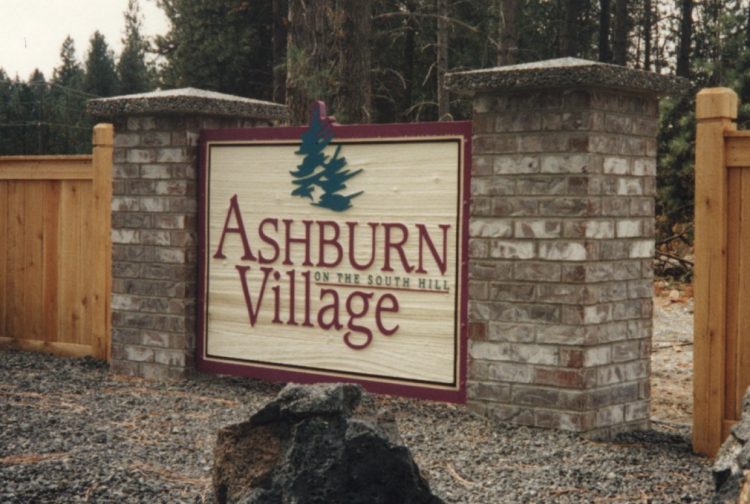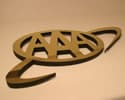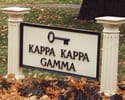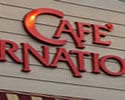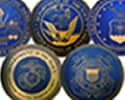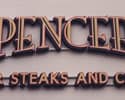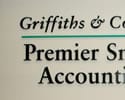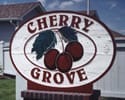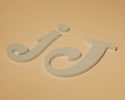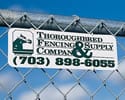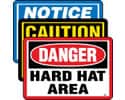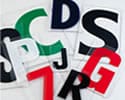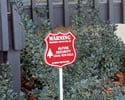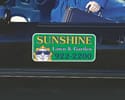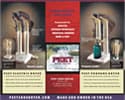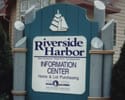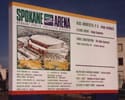Product Uses and Applications
Custom Signs, Letters, and Displays are great for:
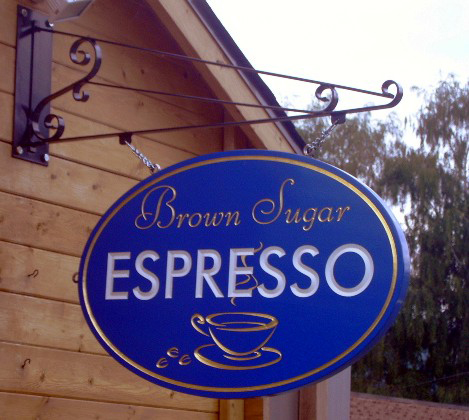
- Department Stores
- Mall Signs
- Tradeshow Signs & Displays
- Kiosk Signs
- Lobby Signs
- Law Office Signs
- Business Signs – Exterior/Interior
- Monument and Entry Signs
- Upscale Department Stores
- Golf Course Signs
- Professional Office Signs
- Government Building Signs
- Corporate Headquarters
- University Signs
- Promotions
- P.O.P Displays
- Exhibits & Kiosks
- Framed Prints
- Showrooms
- …this list of outdoor signs could go on forever but you may be able to add a dozen more if you think about it!
Other Items We Supply That You May Not Find on the Site Yet
- Wooden Letters
- Neon Signs
- Yard Signs
- Vintage Signs
Testimonial
I wanted to take a moment to say ‘Thank you’ for a job well done. Your company did an outstanding job. We absolutely love the signs for our community. I want to personally thank you for making my whole experience with this assignment a very smooth one. You exuberate excellent customer service in every sense of the phrase. It was a pleasure working with you. Again, thank you for the beautiful signs.
– Cassandra, Maryland

Flat Panel Signs and Dimensional Sign Letters Created from Metal, Plastic, Wood, and Urethane

Get a Quote Now!
Visigraph is a wholesale domestic and import broker, and therefore, we require a minimum order of $500USD for ALL wholesale orders.
All fields marked with star (*) are required.
Large Quantity Quotations
If you need large quantities of signs or letters, call us at 509-483-8000, email our sales department directly at sales@visigraph.com, or fill out our Get A Quote form.
The Visigraph 100% Satisfaction Guarantee
We pay careful attention to every detail on every order we receive, and our 100% Satisfaction Guarantee is just what it says…you’ll love our signs and letters or we’ll re-do them. It doesn’t happen often, but hey, we’re human too! Rest assured, though, that if it does, we’ll fix’em free of charge and with no hassle.
Calculating the Size of your Sign
Length x Width = Number of Square Inches. For example, if you have a decal that is 3” x 5” simply multiply 3 x 5 = 15 square inches.

Sign Making and Printing
Signs that have traditionally been produced with paint, such as internally illuminated polycarbonate displays are now imprinted either directly to the polycarbonate or onto translucent decal material and laminated to the polycarbonate. The result is the ability to produce photographic quality at very affordable pricing.
Full-color digitally pressed banners used to have to be screen-printed by the hundreds or thousands to absorb set-up costs, now can virtually be printed singly and at a reasonable cost.
There are still many signage that are not produced digitally, but as time passes, it is likely that digital technology will supplant screen, lithographic, offset, and flexographic printing. Sandblasted and carved signage displays are probably safe at this point from the onslaught, but do to the cost of these it’s likely only a few percent of them will be the old styles, and even they often contain a digital element added to them.
Sign makers now may have two main types of digital printers. The first to be developed was the roll-to-roll printer in which one could print vinyl banner material or various types of vinyl materials that could be printed, laminated, and applied to rigid materials such as PVC signs, MDO plywood, or plastic yard displays.
And the inks have also improved, both ecologically and durability-wise. It has been found that in our area, the inks have lasted 8 to 10 years, and that has been since the late ’90’s when many jumped into digital pressing. The new inks are even better. And they’re using less toxic chemicals than they used to formulate the inks with, so they’re better for the environment.
With the advent of dye sublimation digital press media, businesses can print onto a transfer paper, then with special equipment, transfer the full color images to the fabric…for relatively low cost. The fabric varies, but generally there are a few main categories; sheer, heavy duty, and stretch materials. These graphics are used mostly in trade show booths and retail displays.
Making Visible Signs
It is important to know how fast traffic moves by sign on your business, and brand recognition can be helpful for customers looking for your business in keeping your copy to a minimum. However, most companies do NOT have brand recognition like major banks or retail store chains, so they’re stuck with educating passersby of what their particular business does or can do for them.
There are a lot of other factors that affect readability such as light conditions, pitch or angle of the sign from the street where your customer is driving by, speed at which the customer may be driving, color combinations of letters, whether the letters are neon, electrical, or appliqued to a banner, etc.
It is instructive to note that a 16” letter, though, is readable from about a city block away, or 360 ft., just a bit longer than an American football field. It is also instructive to note that the list in the previous paragraph gives you a pretty good idea of other variables, so the size above is not “set in stone.”
Typically, the average reader can digest about 5 words at 40 miles per hour at a distance of a city block, so the rule of thumb for your outdoor business signs or banners is to keep it simple and readable. Your customers will appreciate you for it.
Laminating Signs
We often do add a clear matte overlaminate to digitally printed decals because clients think they’re getting something extra, and the cost is not too high to do so, and when we let them know we’re throwing it in for free, our clients love it.
Similar to the polycarbonate sheet displays, businesses can execute full color printing on pressure-sensitive adhesive vinyl, using a large format digital printer, then laminate the vinyl – after a 24 hour period dry time – and mount the prints to various substrates. Those utilizing this vinyl are able to adhere these prints to less expensive business ad displays on other materials like DiBond®, MDO plywood, Alumalite®, aluminum, and other substrates.
For signs that are dimensional, such as a sandblasted cedar, redwood, or high density urethane sign, the only reason I see for a clear coat might be graffiti clean-up if the sign is vandalized. It used to be the case, when signs were hand-painted on MDO plywood or other substrates, and sign painters used oil-based enamel paints, they would often clear-coat the signs to prevent “chalking off.” This happens as paint ages and it gets a kind of powdery white coating that “grows” on the surface of the paint.
To prevent this, a clear-coat was often added to the painted signs that helped them not to chalk off and remain bright and readable for a longer period of time. This would be similar to why a car manufacturer will apply a clear coat or two over the finish paint on an automobile. It keeps the paint looking good for a couple or three additional years.
The only other reason I can think of to clear coat or use a clear laminate on any signs or stickers or banners would be to make the entire surface either matte, semi-gloss, or glossy. Sometimes when you print a substrate such as a vinyl decal material, the ink may have variations in the glossiness due to the flat finish of the decal material. In this case, using a matte or gloss over-laminate will help to even out the look of the decal or whatever else you printed.
Sign Installation Permits
The first thing you need to do is to check with your local city or county planning department to learn what the regulations for the address where you want the sign placed. Assuming that you can put a sign in the zone you want to place your business in, they will require you to provide some sort of drawing that shows how your sign will be installed.
You’ll also need the parcel number, where the sign would be located, or address. If it passes muster with the local sign police, then you’ll want to call the state department of transportation in the state where you want the sign, and make sure that the type of sign, size, and height of the sign will pass the coding set by your state.
Once you’ve taken these steps, you will know, one way or the other, what you’ll be able to do as far as your desired sign goes.
Most major cities require signs to be a certain size in various zones – commercial, business, residential, etc. It is generally forbidden to have signs in residential areas except temporary signs like real estate signs, and political signs, although in the two least free states in the country, California and New York, there are municipalities that have forbidden even those.
State and Federal regulations and laws require permits so we can keep track of the number, use, location, spacing, and maintenance of signs. This also helps us ensure signs are properly maintained, removed when they have served their purpose, do not clutter our roadsides, and do not create a safety hazard.
You may put up a sign on your property in some areas without a permit, but most major towns and cities consider signs a source of revenue, so they require permits.
They also require permits for signs based on zones in many municipalities. If you are in a commercial and industrial zone, there are usually fairly relaxed regulations on the size of sign you can put up, but if the signs get over a certain square footage, engineering requirements will need to be met.
If the sign exceeds a certain height and/or size, it will most certainly require an engineers sign off on your blueprint or drawings, as these signs require specific types and/or thicknesses of steel as well as a specific amount of ballast (concrete) around the base of the pole in the ground. There may also be varying types of soil or rock in your area, and this could affect how much ballast weight or volume your sign system requires.
So, often you may be able to get your permit the day you go in if your blueprint is for a smaller sign; if you’ve already gotten a sign off from a structural engineer; and the size and style of the sign is acceptable within that area’s zoning requirements. Some areas will not allow pole signs. Square footage restrictions are also common with many municipalities and counties as well, especially in residential areas, as most homeowners are not OK with a large sign in their neighborhood.
That depends on what type of outdoor advertising you’re doing. Typically, if a sign is temporary, like a banner or small bootleg sign, no permit or license is needed, at least not in most areas. You’ll want to check with your local sign police, er, I mean county or municipal building department to learn what your local code requires.
Popular Posts Related to the Products:

